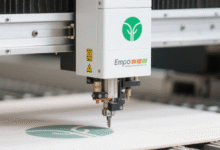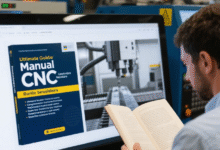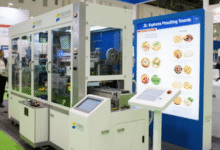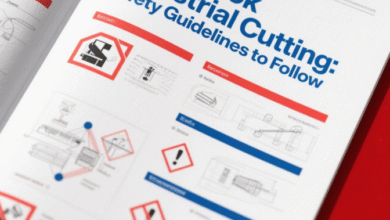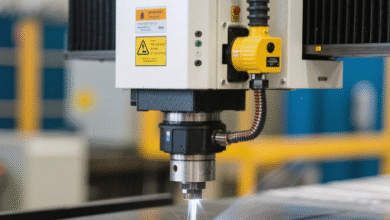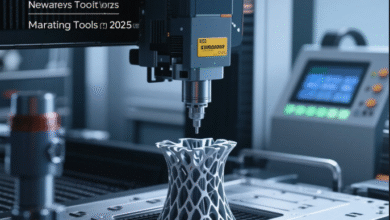3D Prototyping Tips: Mastering the Art of Innovation
Advertisement
The Power of 3D Prototyping in Modern Innovation
3D prototyping has revolutionized the way products are designed and brought to market. It allows for rapid iteration, quick feedback, and cost-effective solutions to complex problems. In today’s fast-paced world, mastering the art of 3D prototyping is essential for staying ahead of the competition and delivering innovative solutions to customers. This article will provide you with valuable tips and insights on how to make the most out of 3D prototyping in your projects.
Understanding the Strengths and Weaknesses of 3D Prototyping Tips
1. Strengths:
One of the key strengths of 3D prototyping is its ability to bring ideas to life quickly and efficiently. It allows designers and engineers to visualize concepts in a tangible form, making it easier to communicate and iterate on designs. Additionally, 3D prototyping enables rapid product testing and validation, reducing time-to-market and overall development costs.
Another strength of 3D prototyping is its versatility. It can be used for a wide range of applications, from creating prototypes for consumer products to medical devices and automotive components. The technology is constantly evolving, with new materials and techniques being developed to push the boundaries of what is possible.
2. Weaknesses:
While 3D prototyping offers many benefits, it also has its limitations. One of the main challenges is the accuracy and resolution of the final prototype. Depending on the technology used and the complexity of the design, the final product may not always match the desired specifications. This can lead to additional time and costs in refining the prototype to meet the required standards.
Another weakness of 3D prototyping is the cost associated with acquiring and maintaining the equipment. High-quality 3D printers and materials can be expensive, especially for small businesses or startups with limited budgets. Additionally, the learning curve for mastering 3D prototyping software and techniques can be steep, requiring dedicated training and resources.
3D Prototyping Tips Table
| Tips | Description |
|---|---|
| 1. Start with a clear design concept | Before diving into prototyping, have a well-defined design concept in mind to guide the process. |
| 2. Choose the right prototyping technology | Consider the type of material, resolution, and speed required for your project to select the best technology. |
| 3. Optimize your design for prototyping | Modify your design for better prototyping results, considering factors like support structures and part orientation. |
| 4. Test and iterate continuously | Use rapid prototyping to test ideas, gather feedback, and iterate on your design for optimal results. |
| 5. Consider post-processing techniques | Explore post-processing methods like sanding, painting, or assembly to enhance the appearance and functionality of your prototypes. |
Frequently Asked Questions about 3D Prototyping
1. What are the main benefits of 3D prototyping?
3D prototyping offers rapid iteration, cost-effective solutions, and quick feedback for product development.
2. Are there any limitations to 3D prototyping?
Accuracy, resolution, and equipment costs are some of the limitations associated with 3D prototyping.
3. How can I choose the right 3D prototyping technology?
Consider factors like material type, resolution, and speed requirements to determine the best technology for your project.
4. What post-processing techniques can I use to enhance my prototypes?
Post-processing methods like sanding, painting, and assembly can improve the appearance and functionality of your prototypes.
5. How can I optimize my design for 3D prototyping?
Modify your design for better prototyping results, considering factors like support structures and part orientation.
6. What are the key considerations when starting a 3D prototyping project?
Have a clear design concept, choose the right technology, and test and iterate continuously to achieve optimal results.
7. How can I overcome the challenges of 3D prototyping?
Address accuracy issues, equipment costs, and steep learning curves by investing in training and resources for your team.
Encouraging Action in 3D Prototyping
Now that you have gained valuable insights and tips on mastering the art of 3D prototyping, it’s time to take action. Put your knowledge into practice by applying these tips to your projects, exploring new possibilities, and pushing the boundaries of innovation. Remember, 3D prototyping is a powerful tool that can transform your ideas into reality and drive success in the modern world of design and engineering.
Stay curious, stay creative, and stay committed to excellence in your 3D prototyping endeavors. Embrace the challenges, learn from your mistakes, and celebrate your successes along the way. The journey to becoming a master of 3D prototyping is a rewarding one, filled with endless opportunities for growth and innovation.
Take the first step today and embark on a journey of discovery, experimentation, and transformation through the world of 3D prototyping. Your ideas have the power to change the world – all it takes is a spark of creativity and a commitment to realizing your vision. Start prototyping, start innovating, and start shaping the future of design with confidence and passion.
Disclaimer
The information provided in this article is for educational and informational purposes only. It is not intended to be a substitute for professional advice or guidance. The author and publisher of this article make no representations or warranties with respect to the accuracy, applicability, or completeness of the contents. They disclaim any liabilities for any errors or omissions in this information or any losses or damages incurred as a result of the use of this article. The reader is solely responsible for their actions and decisions based on the information provided here.


